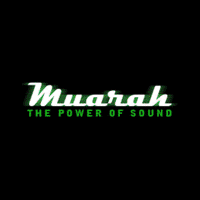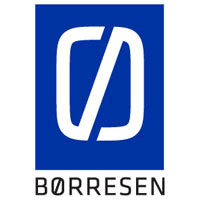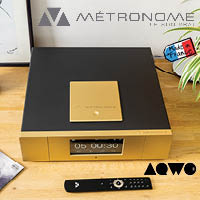Mojo Audio Deja Vu Music Server with Linux, Roon, Tidal, and HQPlayer Software
Five years ago I began using a music server and DAC in lieu of a compact disc player, thus starting my journey into digital audio streaming. Keeping in mind that music servers are in fact computers, my main motivation came from discovering Mojo Audio, a company which at the time modified Mac mini computers to be serious music servers by (among other changes) replacing their internal power supplies with Mojo's own high-end external linear power supplies. Over the last 5 years I have kept the Mac mini as my reference, only upgrading it by changing player software from JRiver to the revolutionary Roon Labs, subscribing to Tidal, and swapping out its power supply by a series of better ones—all made by Mojo Audio, too; currently I use their Illuminati V2—it is a ‘choke input’ power supply and is my favorite [my review of the V1 may be found here].
But five years is a long time in the digital world. Much has happened. I did see and listen to various new alternatives including NUCs (‘Next Unit of Computing’ mini-computers) which were smaller, lighter, typically less expensive, and more energy efficient than a Mac mini. Like a Mac mini, a NUC is ‘headless’, e.g., you do not need to connect a monitor or keyboard to it except for setting it up with software and such. Once set up, controlling music play is accomplished by using a wirelessly connected app on a mobile device or tablet. I also checked out serious commercial high-end music servers, and I have been impressed at times. Suffice to say it has become clear that the Mac mini is on the way out; there are quite a number of alternatives.
Mojo Audio owner/designer Ben Zwickel informed me a couple of months ago that he had something that I could check out for review, called the ‘Deja Vu Music Server’. I accepted the offer. Although the Deva Vu can be set up by Mojo Audio to use several different operating systems (MAC OS, Windows...), several different types of player software, and a few different hardware configurations, such as server, renderer, or network access server or redundant array of independent disks (NAS/RAID), the version that Zwickel had in mind for me to review would come with an optimized version of Linux (as its operating system), Roon Server, Tidal, and HQPlayer Software, and as with all Deja Vu models, would internally contain the very same (extraordinary in my opinion) Illuminati V2 power supply that I was using for my Mac mini, and have used to power other devices such as the Mytek Brooklyn DAC +. By using this power supply internally in the Deja Vu, it might very well be the first ever to use an internal ‘choke input ’ power supply.
I was very intrigued, but also a bit wary: I would have to give up Mac OS and learn some Linux for the review. Luckily it was Ubuntu Linux (Ubuntu Studio to be precise), a user-friendly version as I discovered—no need to have a Ph.D. in computer science. So, I am glad I went for it—it was relatively painless. And the increase in sound quality over my Mac mini was an immediate improvement I was not expecting. Exceptional. More on that in this review.
Linux has some serious advantages over Mac OS (or Windows) for a dedicated music server: It is very light weight, and is both free and open source; it can be tailored to do a specific task–without having it cluttered with all the various unnecessary applications that come with commercial operating systems. Suffice to say, Mojo Audio recommends and provides customer support on the optimized version of Linux they install.
What does it look like, what are its features and price range?
The Deja Vu is an unfussy, inert-looking, very solidly built, black metal box 17.5”(W) x 12”(D) x 3.25”(H), weighing in at about 22 pounds (a bit more if adding on various options). The chassis is made of low-resonance polymerized aluminum composite and is a rigid 2-piece construction with 4 chassis sides on both the top/front and base/rear pieces. According to Zwickel, it took years to engineer this new chassis for minimal mechanical resonance, maximum rigidity, and maximum shielding from electro magnetic interference (EMI).
The front of the unit only has a small standby button for (say) restarting (no monitor, no other buttons). The power switch is on the back; turning it on turns on the internal power supply, and keeps a small blue LED light on in front. Once the power supply is on, pushing the standby button then starts up the unit and then a second blue LED light stays on, too. The Deja Vu does not have (built within it) a CD/disk drive for ripping; that is a good thing in my opinion because an included disk drive is just another mechanical device that can break and also interfere with the main purpose (serving music). As with a Mac mini, one can do all their ripping on another computer and then use (for example) a USB thumb drive to move it onto the Deja Vu.
On its only 6 Watt internal main board, the Deja Vu utilizes (as its computer) an Intel quad-core processor with turbo boost up to 2.6GHz, with low-latency CAS 9 RAM. There is no internal fan (so as to avoid adding noise), but lots of ventilation grills on the top and sides. It gets a bit warm but never hot even after hours of playing. As with a Mac mini (or any NUC), it is headless, there is no monitor or keyboard; one can connect their own on the back of the unit (VGA or HDMI inputs for monitor, USB for the keyboard/mouse). There is no Wi-Fi built in; one instead connects to the internet via one of its ethernet ports on the back. For example, if you have an Apple Airport Extreme connected to the ethernet (as I do) as your wireless base station, then you can connect the Deja Vu to it with an ethernet cable. Then you can control the Deja Vu’s music selection/playing wirelessly via your wireless network by using (say) an iPad with the Roon Remote App (more on this later).
The Deja Vu is not cheap: The standard model is $4556.55 which comes with a small 120GB mini-PCIe SSD card which is only used for system and other software as well as streaming music from the Internet (such as Tidal) or a NAS drive. The standard model comes with so-called ‘Utilitarian I/O Ports’ located in the middle of its back (4 USB and 2 ethernet); that is where you connect the Deja Vu to the internet and to a DAC, etc.
Various add on options can be installed such as extra storage drives, RAID backup configurations, high performance USB/ethernet ports, and a full PCIe high-performance SSD card. In fact one can bump up to 12TB of internal SSD music library storage!
The model I reviewed had 3 optional things installed internally, bringing the price up to nearly $7K at $6906: Both an optional high-performance JCAT Femto PCIe Ethernet card, and optional high-performance JCAT Femto PCIe USB card (each card with 2 ports), and an additional 1TB Samsung 850 Pro 2.5 inch SATA SSD for storing music files. These optional JCAT cards are serious: they are isolated inside and separately powered by Internal Regulator Modules. Distinct from the ‘Utilitarian I/O Ports’ (still there), these special ‘High-Performance I/O Ports’ are placed way to the right on the back of the unit–far away from the Utilitarian ones. The main use of the High-Performance ports is as dedicated connections to your DAC and/or ethernet (not for (say) connecting a keyboard). You could use the Utilitarian ports for this purpose, so you do not need them to use a Deja Vu; simply, they offer a higher level of performance according to Mojo Audio. Because of the additional ports, the model I reviewed had 6 USB ports, and 4 ethernet ports. Very useful.
Zwickel explained to me the importance of the Deva Vu’s basic internal design towards performance:
Note that the very important thing in all of this in regards to performance is that the software commands and the streaming music data travel down independent data busses (one mini-PCIe and up to three SATA) so that the data controllers only move data in one direction. When music and software commands travel down the same data buss [sic] the data controller has to alternate stopping one and starting the other. This is similar to a traffic cop directing two lanes of traffic into one lane. The result of data moving on different data busses [sic] yields a more liquid musical flow.
Setting it up.
Since all relevant software was already installed, I only had to connect the Deja Vu with an ethernet cable (I used one of the high-performance ports) to my Apple Airport Extreme, and turn it on. My reference DAC (PS Audio Direct Stream) supports ethernet streaming through its Bridge II; hence it is always connected to the same network via an ethernet cable into the Apple Airport Extreme. If (most commonly) one needs to or wants to use a USB connection to a DAC instead of ethernet one uses a USB cable between the DAC and the Deja Vu (my DAC supports both USB and ethernet; I can have both connected at the same time and choose which method I want to use by creating separate Roon zones).
At this point, I opened Roon Remote on the iPad, logged into Roon with my account, which prompted me to login in also to my Tidal account, and changed my Roon ‘Core’ to be the Deja Vu (versus the Mac mini), which was now displayed as an option, and then created a new zone for the DAC. Music played right away, and not only from Tidal, but Zwickel had kindly put some music files on the 1 TB internal, so I was able to play a wide variety of music right away. Temporarily attaching a monitor, keyboard/mouse and backup drives of my own music (using the Utilitarian USB ports and making sure to use external drives that are formatted in FAT32 not MAC OS), I was able to move selections of my own music files onto the Deja Vu. I was up and running in no time.
Final Note: When using Linux with Roon, it is the ‘Roon Server’ software package that is used which supports both core and output, but not control, that is, the selection of what music to play. This means that there is no graphical user interface (GUI) for controlling Roon directly on the server; control is only via the Roon Remote app. That is a good thing because the user need not screw things up (typically by mistake or foolishness) by trying to deal with control from the music server, which after all is a computer and lends itself to all kinds of mischief lurking with one wrong move when connected to the internet or fiddling with software. On the other hand, with the Deja Vu, if a user is computer science savvy, they can get in and use the server as a computer. Moreover, Mojo Audio can change the Deja Vu at your leisure to do many other ‘Universal’ things—as they like to describe it; the basic unit is capable of evolving as both your needs and digital technology change. It is not stuck doing only what the manufacturer insists for you as is the case for many other high-end music servers and with good reason by these other manufacturers: keeping things stable for the user (e.g., only using the manufacturer’s chosen OS and player software, and no control over the computer itself by the user to avoid the user messing things up). This open feature (of its innards) of the Deja Vu for a user is not for everyone—just as a Mac mini is not.
Sound Quality
Right from the start I noticed a difference: the Deja Vu yielded more spaciousness and natural resonance of acoustic instruments/voice, minute details exposed with extraordinary clarity—and no discernible distortion. Each instrument down to individual cymbals in percussion seemed to have more space in the sound stage to display (but not ‘show off’) their natural timbre (in particular, piano was spectacular). Clean, accurate, transparent; the Deja Vu did not smooth things over to make them sound ‘nice’. Even electronic music benefited; more musicality. CD rips often sounded as good as I thought higher resolution files should.
My Mac mini, to its credit, yielded rich sound, wonderful spatial queues and fine clarity. I was quite addicted to it; I actually was hopeful that in the end the difference in sound quality if any would be negligible. At first I thought perhaps by changing an interconnect cable or two, I could get the Mac mini to compete. No. It simply could not compete; kind of like doing a couple of push ups and taking a vitamin thinking it will solve all of your health issues (I think I just stole that from a line in one of Woody Allen’s movies). Putting the Mac mini aside, I never heard such digital sound quality on my system as I did using this Deja Vu. CD rips, or higher resolution PCM, and DSD files all benefited from the Deja Vu. Here are some examples:
• Simon and Garfunkel, Live from New York City, 1967. (The Sound of Silence in particular; best recording of that I ever heard.)
• Ben Allison, Peace Pipe, Palmetto Records, 2002. I only recently was acquainted with this CD, but the Deja Vu made Allison’s bass now sound even better, more natural. Allison has a new mix of his LP (and only on LP) recording, Quiet Revolution coming out at 24/96 PCM in Fall 2018; can’t wait to hear that.
• David Byrne, American Utopia, 2018. This is an example of electronic music that the Deja Vu brings to its best (in my opinion) for musicality and effect—even though it is not recorded at the highest level—Byrne may very well have recorded this in his house! I have become quite enamored with this album. Byrne’s voice still holds up so well after all these years (Talking Heads, etc.). Play it relatively loud and be sure to listen to the lyrics. My favorite tracks are 1 (I Dance Like This) and 4 (Dog’s Mind). Goes very well with a shot of Vodka—you might need it; you might even dance.
• Bill Frisell. My favorites include the album Ghost Town. Probably, it is my all-time favorite of his even though it is not live (that track Wildwood Flower, track 3 is quite something, just gorgeous). After all he is a master at guitar whether acoustic or electric.
• Stevie Ray Vaughan, Couldn’t Stand the Weather, DSD 64. The cut Tin Pan Alley. Even the wood block is exceptional sounding. Probably the first time I appreciated the DSD version.
• The Beatles, Sgt. Pepper’s Lonely Hearts Club Band, [2017 Remix] track When I’m Sixty- Four. Man, this is so good on the Deja Vu and reminds me of my youth—even though I too will be 64 in several years! When my mother turned 64 more than 20 years ago, I played a CD of that for her on her birthday. My grandmother bought me the LP when it first came out in 1967. The Deja Vu helped remind me of all these things; Deja Vu?
• Bach, Suites for Solo Cello (2 CDs), Janos Starker, cello, Mercury Living Presence. Although the LP version in my collection beats anything I have ever heard (and probably always will) [yup!—Ed], the Deja Vu considerably lessened the gap. Exceptional.
Summary.
Mojo Audio has created here one of the finest (if not the finest) music servers I have ever heard. I did not expect it. Sure, when you add in the price of the add ons in my particular review unit, it gets expensive, but there are music servers out there that cost much more and do not sound like this. And it can be modified over time to accommodate changes in this fast changing arena. If you value exceptional sound quality without unnecessary peripherals, and are comfortable admitting that, after all, a music server is a computer, and you might occasionally have to deal with that fact—then the Deja Vu is for you. My Mac mini is not upset; I have upgraded its location at home to the bedroom where it will serve as a fine computer for other uses. Highly recommended.
Further information: Mojo Audio
Associated Reference Equipment
Speakers: Alta Audio Celesta FRM-2
Amplifiers: 2 Merrill Audio Veritas Monoblocks Special Edition (SE), Mytek Brooklyn Amp.
Preamplifier: PS Audio BHK Signature using Tungsram PCC88/77DJ8 vacuum tubes for input stage.
DAC: PS Audio DirectStream, Mytek Brooklyn Dac +
Music Player: Mac mini modified by Mojo Audio with separate linear power supply, (Mojo Audio Illuminati V2)
USB cable: Wireworld Platinum Starlight 7
Interconnects : Anticables Level 6.2 ABSOLUTE Signature RCA, Anticables Level 4.1 Reference PLUS Shadow (with cryo option) XLR, Mojo Audio Lucent SE XLR, and Antipodes Reference XLR.
Speaker cables, jumpers, power cords: Waveform Fidelity.
Power generator: PS Audio P12 Power Plant.



























